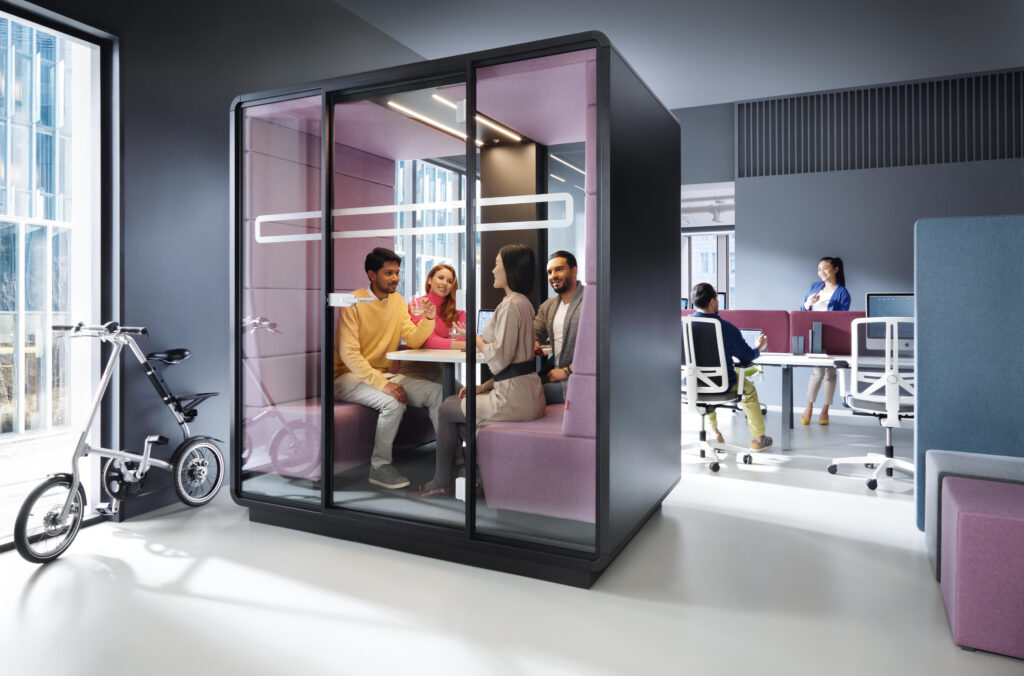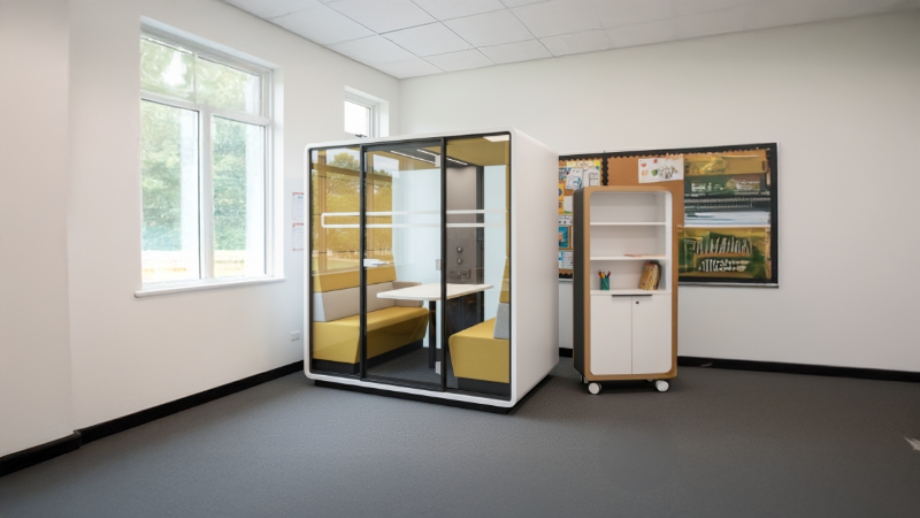Office Furniture Company: Creating Focused Spaces on Campus: Acoustic Pods That Work
Today’s learning environments are built for collaboration, but they often sacrifice something essential: quiet, private space. In open, flexible campuses, staff and students can struggle to find areas for focused work, confidential discussions or uninterrupted online teaching. Building permanent rooms is not always practical or affordable. That is where acoustic pods come in.
At Office Furniture Company, we help education providers across Australia create adaptable spaces that support both concentration and collaboration. Acoustic pods offer an immediate way to add privacy, productivity and comfort without construction costs or disruption.

Practical Solutions for Productive People
Every campus needs spaces that meet different needs, from individual focus to small-team planning and private consultation. The HushFree range delivers this flexibility with modern, mobile designs that fit easily into existing layouts.
HushFree.S – Private Focus Space
Compact and purpose built, the HushFree.S provides a quiet environment for concentrated work. With a height adjustable desk, face level lighting and reliable sound isolation, it is ideal for educators recording lessons, holding virtual meetings or completing tasks that need uninterrupted focus.
HushFree.M – Confidential Meeting Hub
Designed for up to four people, HushFree.M is a mid sized pod that provides privacy for counselling sessions, student support, HR discussions or small group collaboration. It offers the calm and confidentiality that open offices and shared staff rooms cannot guarantee.
HushFree.L – Team Planning and Collaboration Zone
The largest in the range, HushFree.L supports up to six people in comfort. Its adaptable layout makes it perfect for planning sessions, group learning or hybrid meetings where sound control and visibility matter.
Smarter Investment for Education
Pods deliver the performance of traditional rooms without the permanence or expense. They can be added, moved or reconfigured as programs and staffing needs change, protecting long term value and reducing capital waste.
All models in the HushFree range are independently certified to ISO Class A for acoustic performance, ensuring consistent sound insulation and a professional, low decibel workspace. Built in casters allow each pod to be relocated without professional installers, supporting agile campus design. Wheelchair accessible models ensure inclusivity across all staff and student facilities.

A Better Way to Build Campus Capability
Beyond their practical benefits, acoustic pods represent a strategic investment in people. When teachers can record content without background noise, student counsellors can meet confidentially and administrators can plan in peace, overall productivity and wellbeing rise. These are small spaces that deliver big outcomes.
At Office Furniture Company, we understand that education environments evolve constantly. Our goal is to help institutions create workspaces that are efficient, flexible and ready for the future. Acoustic pods provide a proven way to balance open collaboration with private focus, improving the day to day experience for staff and students alike.
Contact us to learn more about integrating acoustic solutions across your campus and discover how easily you can add function, privacy and professionalism without rebuilding your space.
This article is provided by Office Furniture Company, one of Australia’s leading suppliers of commercial-grade furniture and acoustic solutions for schools, universities, and workplaces.
1300 997 747
[email protected]
officefurniturecompany.com.au

